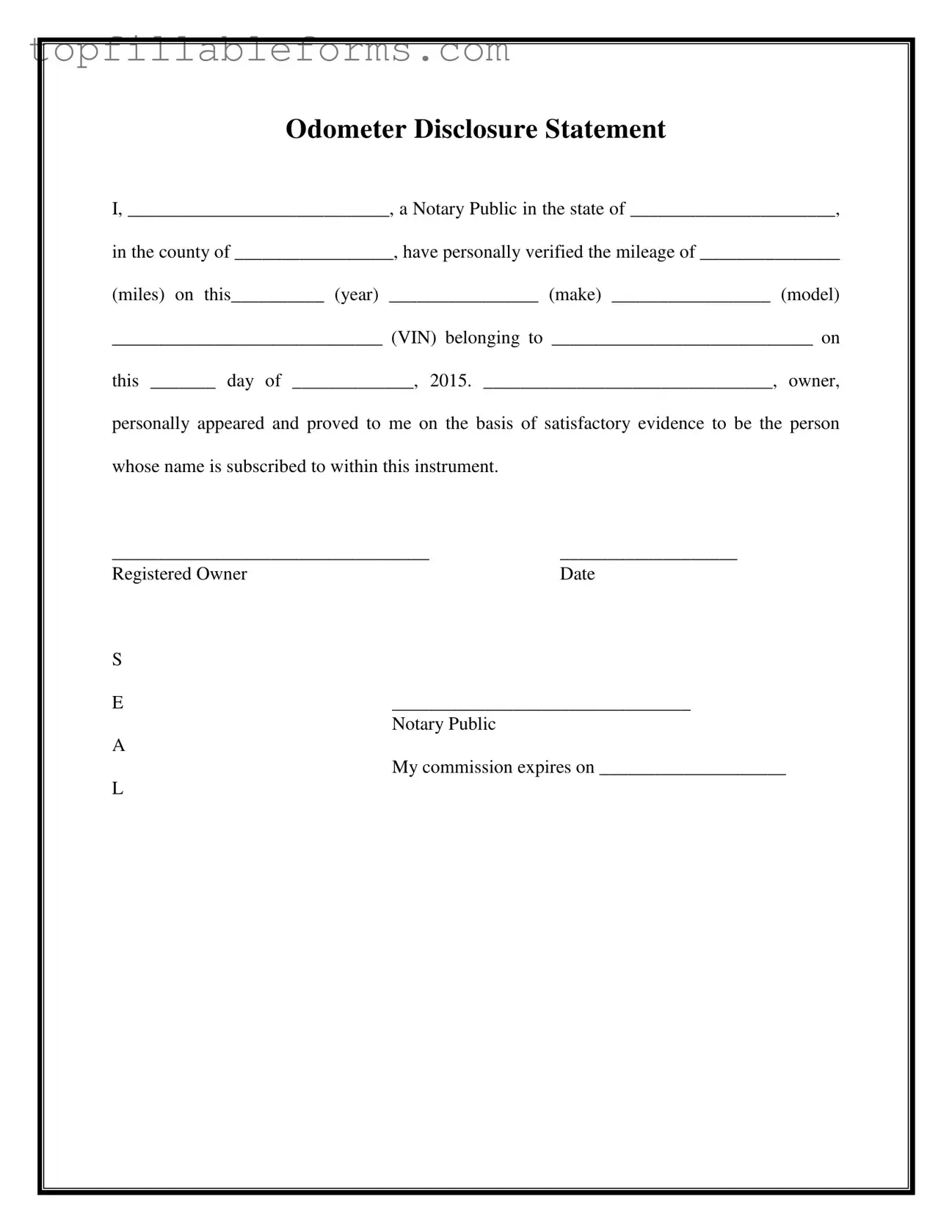Printable Notarized Odometer Statement Form in PDF
The Notarized Odometer Statement is a crucial document that verifies the mileage of a vehicle at the time of sale. This form serves to protect both buyers and sellers by ensuring that the odometer reading is accurate and legally documented. Understanding its importance can help you navigate the complexities of vehicle transactions with confidence.
Open Notarized Odometer Statement Editor Here

